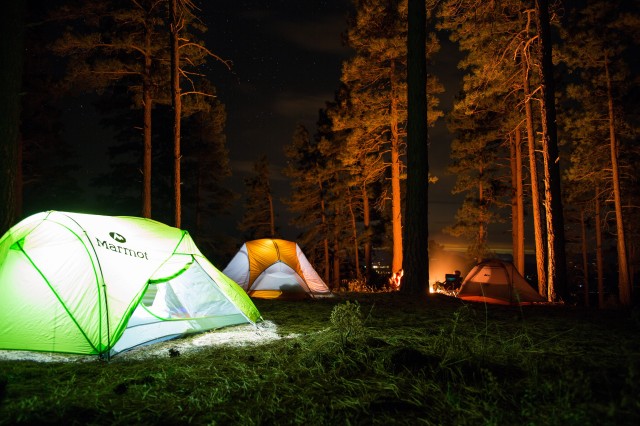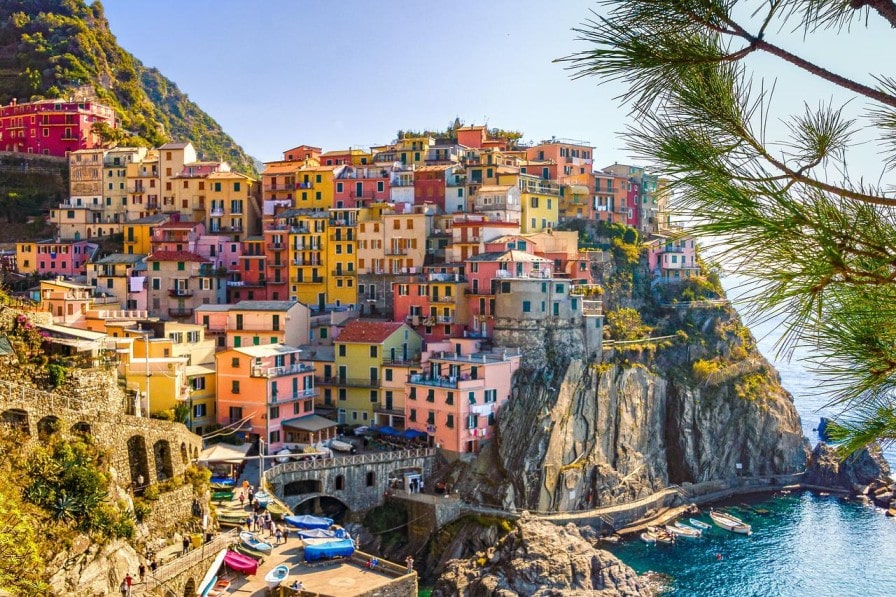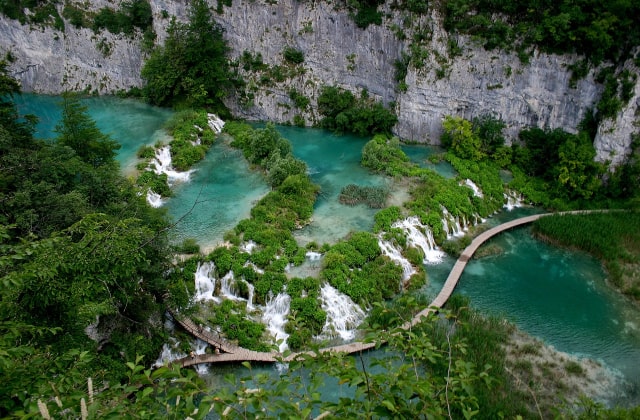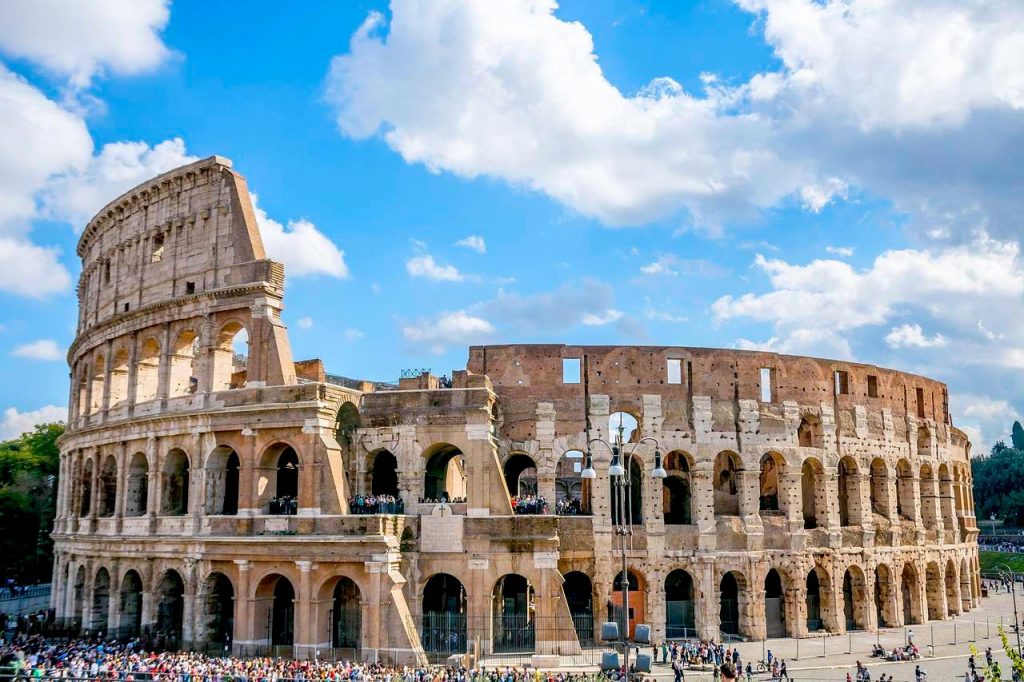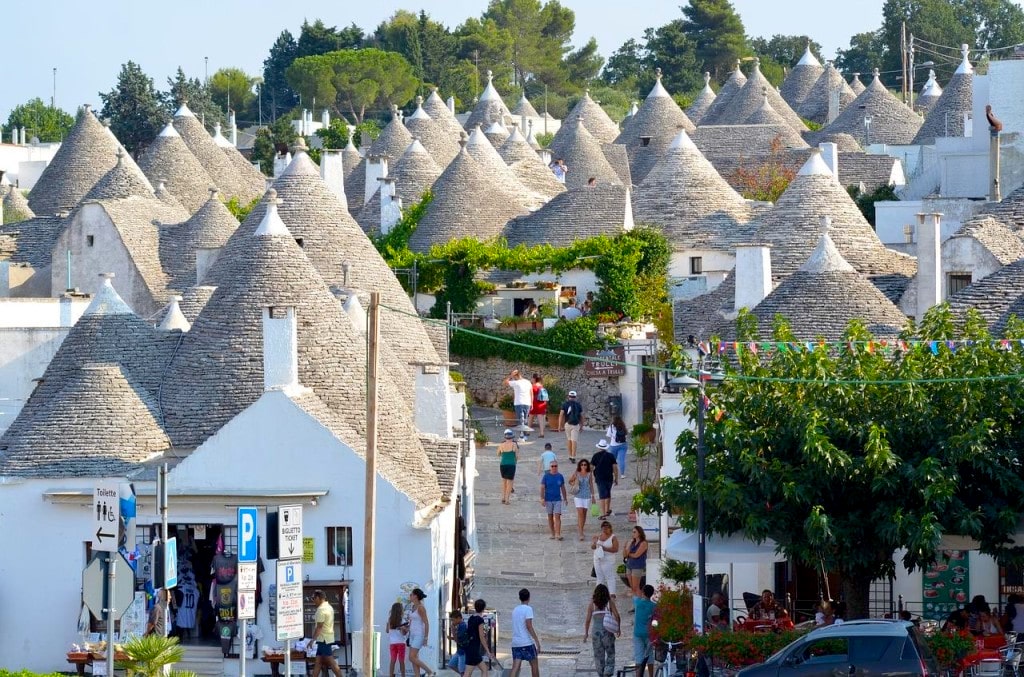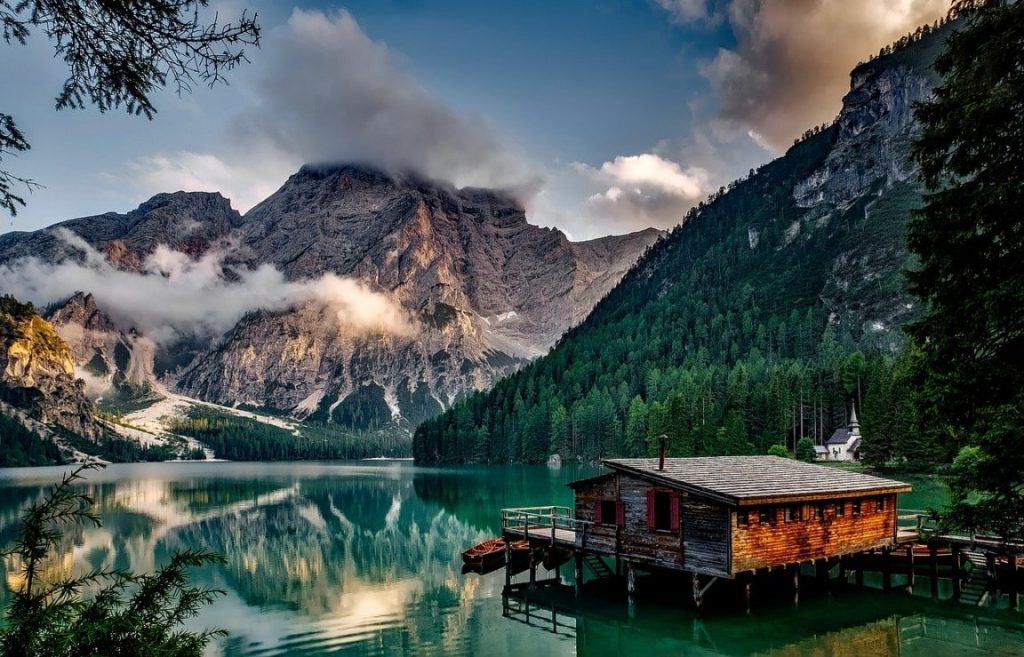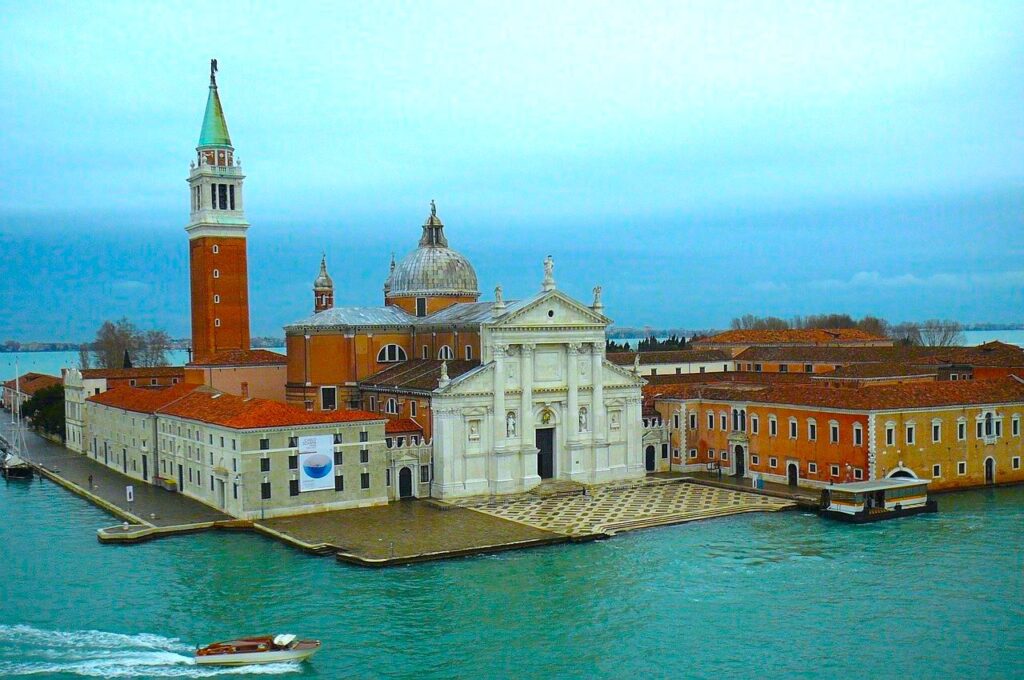Florence is located in Central Italy and is the capital of the Tuscany region in Italy. Florence is famous as the site of numerous Renaissance-era works of art and architecture. It would take you weeks and days to see everything there is to see in Florence. One of the many churches in this city might offer the main attraction.
As a traveler, you have to explore the collection of most visiting and relaxing spots in Florence. The Duomo is one of Milan’s best churches, designed by Brunelleschi and built by Giotto. The cathedral’s dome is covered in terracotta tiles, and Giotto was responsible for designing the bell tower. The sculpture known as “David” by Michelangelo is currently on display at the Galleria dell’Accademia. Botticelli’s “Birth of Venus” and da Vinci’s “Annunciation” are currently on display at the Uffizi Gallery in Florence.
This city has many notable buildings and attractions, but some stand out even among the others. It would be best to prioritize seeing the sights in Florence because of one of Europe’s most visited cities as you arrange your itinerary for your time in Florence.
01 Cathedral of Santa Maria del Fiore and Piazza Duomo

The Florence Cathedral, also called the Cattedrale di Santa Maria del Fiore, is located in the city of Florence in Italy’s region of Tuscany. The Piazza del Duomo and the collection of buildings that make up the complex of the cathedral that stands above it are home to some of the most important works of art in all of Italy. They are located in a space that is quite compact.
You will see some of the most well-known works of art and architecture when you tour the bell tower, the baptistery, the cathedral, and its museum. These works were created by some of the most well-known artists of the Italian Renaissance, including Filippo Brunelleschi, Ghiberti, Giotto Donatello, and Michelangelo. It was begun in 1296 in the Gothic style according to a design by Arnolfo di Cambio. It took until 1436 to finish the structure.
Official website: Cathedral of Santa Maria del Fiore
02 Florence Baptistery (Baptistery of St. John / Battistero di San Giovanni)

The Baptistery of Florence is a church that serves as a minor basilica in the Italian city of Florence. In front of the Campanile di Giotto and the Florence Cathedral is the octagonal baptistery.
The octagonal baptistery was constructed in the 12th century and is stunning both on the inside on outside. It would be best if you put it high on your list because of its marble exterior, beautiful internal mosaics, and priceless art collections. But none of them can compare to the exquisite bronze panels that Ghiberti crafted for the cathedral’s exterior doors. Cathedral’s museum, Museo dell’Opera del Duomo, for an up-close look and to see some of the artifacts created for the baptistery.
Official website: Baptistery of St. John
03 Piazza dei Miracoli
Piazza dei Miracoli, or Piazza del Duomo as it is more formally known, is a walled 8.87-hectare area in Pisa, Tuscany, Italy, that is widely regarded as a major hub of European medieval art and one of the world’s finest architectural complexes. The Piazza dei Miracoli is Italy’s most stunning squares. The square is part of an architectural complex consisting of three famous buildings: the Duomo, Baptistry, and Campanile (Leaning Tower). All three buildings were built during medieval times and were designed by one architect. The square itself is dominated by the Campanile, which has a breathtaking view from the top. This iconic leaning tower has attracted tourists worldwide for centuries – nowadays, more than 4 million each year!
Pisa Cathedral

The Pisa Cathedral, the oldest of the three buildings in the plaza—the others being the Pisa Baptistry and the Campanile, or “Leaning Tower of Pisa”—is a medieval Roman Catholic church consecrated to an Assumption of the Virgin Mary. It is located in Piazza dei Miracoli in Pisa, Italy.
Pisa Baptistry

Baptistery of St. John in Pisa is a Roman Catholic church in Pisa, Italy. The building began in 1152 to replace an earlier baptistery. It was completed in 1363, making it the second structure in the Piazza dei Miracoli after the Duomo di Pisa and its freestanding campanile, the iconic Leaning Tower of Pisa.
Campanile (Leaning Tower of Pisa)
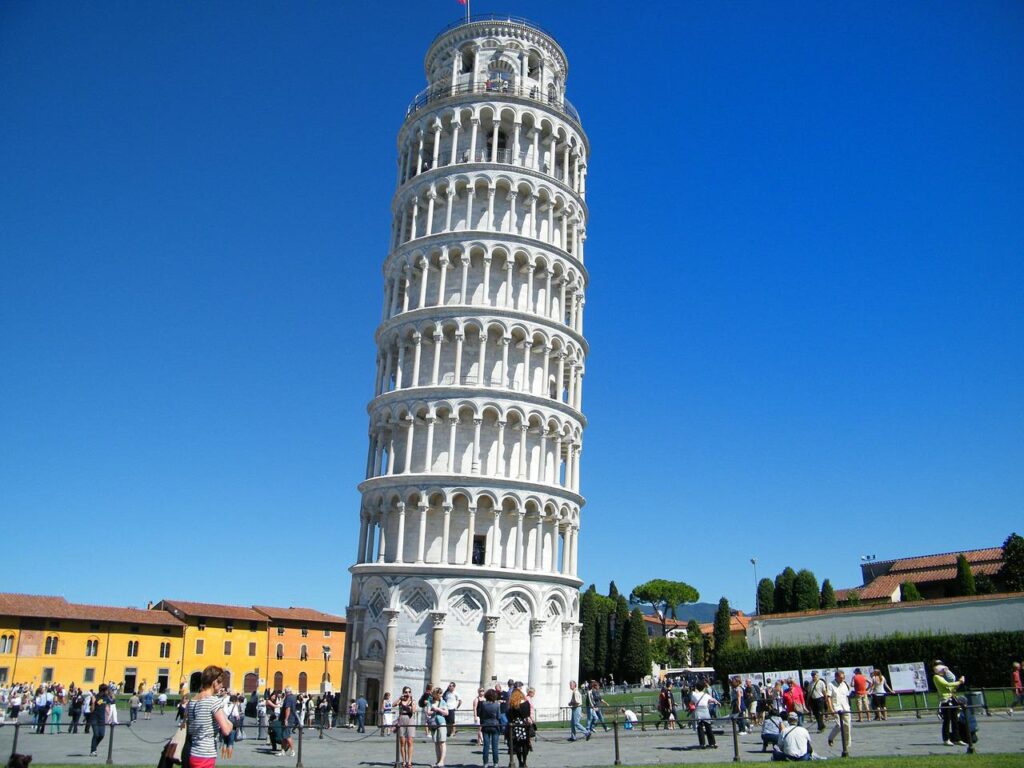
Known as the Campanile of Pisa Cathedral, the Tower of Pisa (or Leaning Tower of Pisa) is a freestanding bell tower. As a result of structural difficulties at the base, it leans approximately four degrees to one side.
Suggested Trailoka: Best Visiting and Relaxing Places in Italy
04 Cappelle Medicee

The Basilica of San Lorenzo in Florence, Italy, is home to two buildings known as the Medici Chapels. These were constructed in the 16th and 17th centuries as additions to Brunelleschi’s 15th-century cathedral to honor the Medici family. They were church benefactors and Grand Dukes of Tuscany.
It’s a damn shame that the second-largest dome in Florence is often missed because all eyes are on the more famous Duomo. This exquisite structure is decked out with marble and glittering gems from floor to ceiling. Once you’ve finished gawking at the stunning murals, head into the smaller chapel to see Michelangelo’s masterful sculptures.
05 Arno River

The Arno is a significant river in central Italy and, without a doubt, a significant natural resource for the region of Tuscany. Located in the Casentino region, the river’s 241 km length may be traced back to Mount Falterona. It travels south at first, then swings about toward the west towards the city of Arezzo. It begins in the rich Valdarno valley in the center of its journey, winds past Florence, Empoli, and Pisa, and ultimately empties into the Tyrrhenian Sea near Marina di Pisa.
Instead of baking in Florence’s heat, taking a tour of the lake is a pleasant change of pace. Try experience paddleboarding on one of the world’s most illustrious rivers with Toscana SUP! By boat, you can avoid the throng and the heat as you glide beneath the world-famous Ponte Vecchio and take in the sights of the city below. If you’ve grown tired of museums, don’t pass up this chance; you will have an amazing narrative to tell and come away with some truly remarkable photographs.
06 Ponte Vecchio

The ancient stone bridge known as the Ponte Vecchio, which spans the Arno River in Florence, Italy, is a closed-spandrel segmental arch structure. One of the most panoramic sights in the city is unquestionably that area, which features elegant arches topped by a chaotic collection of stores. A journey across the bridge will still reveal a beguiling assortment of high-quality jewelry since it has been historically known as the location of the shops of Florence’s skilled goldsmiths.
Above the businesses, you can make out a row of windows that are perfectly aligned with one another. It’s not simply a corridor; on its walls is a precious collection of pictures, most of which are the artist’s self-portraits. Some painters who contributed to the collection are Leonardo da Vinci, Rembrandt, Raphael, Velásquez, and Michelangelo.
Suggested Trailoka: Best Relaxing Things to do in Central Italy – With Pictures
07 Uffizi Palace and Gallery

The Uffizi Gallery is a world-famous art museum that sits right next to Piazza della Signoria in Tuscany’s Old Town. The breadth and depth of its holdings are mind-boggling; even if fine art isn’t your thing, you should at least check out the highlights here.
By comparing the stiff Byzantine art of the period with the more naturalistic people and landscapes created by Renaissance artists in Florence, you will gain a deeper appreciation for how this artistic revolution transformed western art.
While it shared the name of a Medici palace with others along the river, the purpose of this massive structure was not to house the family but rather government offices, scientific research, and an expanding art collection. The octagonal Tribuna, one of the palace’s most beautiful rooms, was built at Francesco I de’ Medici’s request to showcase his collection of priceless artwork and jewels.
08 Galleria dell’Accademia (Academy Gallery)

The original version of Michelangelo’s most famous work, David, may be found in this city’s art museum, even though copies of the sculpture can be found across Florence. Unfortunately, an attack on the statue is now protected by the glass.
There are other works by Michelangelo and other significant masterpieces to be found at this museum in addition to David. The sculptures that are on display in the same gallery give the impression that the four unfinished slaves that were intended for a tomb in Rome are in the process of being freed from the marble. This gives the impression that you are virtually watching Michelangelo’s work.
This is also his incomplete St. Matthew for the Florence cathedral, which can be found here. In particular, if you do not want to view the collections housed in the Uffizi Gallery, you should make an effort to visit the other galleries to become acquainted with the most important works created in Florence between the 13th and 16th centuries. A standout is Sandro Botticelli’s depiction of the Madonna.
09 Palazzo Vecchio (Palazzo della Signoria)

This palace in the heart of Florence is built to resemble a castle, and it is filled with rich apartments and enormous galleries that reverberate with the sounds of history, art, and power. From this location, the city-republic was ruled, and the influential Medici family commissioned the most accomplished artists and architects of the day to construct and adorn their workplaces and residences.
The historical Palazzo Vecchio serves as Florence’s town hall in Italy. It looks out over the Piazza della Signoria, which is home to a replica of Michelangelo’s David monument, as well as the gallery of statues located in the Loggia dei Lanzi, which is right next door.
10 Oltrarno and Piazza Santo Spirito

Although the Basilica of Santo Spirito in Piazza Santo Spirito is not among Florence’s most well-known churches, it is one of the cleanest Renaissance structures. It contains many works of art, particularly in its transept chapels.
To see the woodworkers, silversmiths, goldsmiths, gilders, miniature mosaicists, decorative papermakers, and leather bookbinders who have made Florence their home, stroll the narrow streets of the Oltrarno. You’ll be tempted by the wares on display in the shops, and a nicely bound diary or a gilded wooden box are excellent mementos and presents.
11 Mercato Centrale (Florence’s Food Market)

Suppose you are beginning to feel as though Florence is nothing more than a massive open-air museum. In that case, it is time for you to meet some Florentines when they’re out of their everyday activities. The vast food market known as Mercato Centrale is the best spot to look for them because it is where they are most likely to be found.
It’s possible that to get here, you’ll have to navigate through a maze of street booths selling everything from low-quality plastics to so-called “genuine Italian crafts” that are mass-produced in Asia. Once inside, however, you will be surrounded by the aroma of fresh herbs, olive oils, flowers, candied fruits, luscious nougat, and vegetables grown in the garden. You can grab a bite to eat at one of the food courts, which are located on the top floors of the building.
12 Bardini Museum and Gardens

Stefano Bardini, a painter and collector, purchased a cluster of buildings in the Oltrarno district of Florence in the latter half of the nineteenth century. This included a 14th-century palazzo and a chapel, which he transformed into a museum for his precious art and artifact collections.
His museum exhibits repurposed elements from long-demolished castles, cathedrals, and mansions from the Middle Ages and the Renaissance. To house his equally outré treasures, he had massive fireplaces, gates, shutters, columns, carved stones, complete staircases, sculpted Venetian woodwork, and even ceilings repurposed.
The completed palazzo and its impressive art collection are sure to draw visitors, but they are hardly the only draws. After finishing his museum, Bardini purchased a garden next door that looked out over the river and turned it into an outside gallery to showcase some of his art collections.
The Bardini Gardens are a beautiful spot to escape the city and relax among the trees and flowers of Florence. April is ideal since that’s when the purple wisteria drapes over the pergola and perfumes the air. It’s a great spot to unwind, thanks to the long staircase, marble fountains, patio with café, and English garden. The garden has its entrance, distinct from the museum.
13 Museo Stibbert

The Museum Stibbert is found in Florence, Italy, at the address via Frederick Stibbert, which is situated above Montughi hill. The museum houses more than 36,000 artifacts, one of which is a substantial collection of weapons from both Eastern and Western cultures.
Frederick Stibbert’s villa, gardens, and treasures were previously a private collection but were recently donated to the city. Visitors can now tour the villa and see elaborate displays of Middle Eastern and Japanese armor, artwork lining the walls, and furniture in almost always museum. A fully reassembled army, complete with battle-ready horses, stands in the great hall.
Before arrival, you can check the Ticket price and open hours from their website.
14 Palazzo Pitti (Pitti Palace)

The Palazzo Pitti is another best visiting, relaxing, huge, and primarily Renaissance palace in Florence. It may be found on the opposite bank of the Arno from the historic Ponte Vecchio in central Florence. Visiting the Pitti Palace complex for the day is a great way to get a taste of Florence’s many attractions, including museums, an art gallery, history, a Medici palace, royal apartments, Florentine craftsmanship, and one of Italy’s best gardens.
If a day isn’t quite what you had in mind, at the very least, take a tour of the palace to see the Royal Apartments and the sumptuous rooms. There, you’ll find paintings by Tintoretto, Raphael, Rubens, Titian, and other experts – a collection that almost rivals that of the Uffizi – hanging not in a gallery style but rather as deco for rooms designed for entertaining and show.
15 Bargello Palace National Museum

Visiting the Bargello Palace in Florence should be at the top of your to-do list if only for the opportunity to view the four Michelangelo artworks housed there. Along with a collection of majolica and a room filled with ivory carvings, the palace is decorated with works by artists from the 14th to the 16th century who worked in Tuscany. These artists include Brunelleschi, Donatello, Cellini, the Della Robbia, and Ghiberti.
An entire room is covered from floor to ceiling in gold work and enamels, which were particularly popular in Florence during the Renaissance. The Bargello is distinguished from the other art museums in Florence by the fact that it has a strong emphasis on sculpture and decorative arts.
16 Boboli Gardens

Historical and beautiful, the Boboli Gardens are a public park in Florence that has been welcoming visitors since 1766. Among the first and most influential instances of the Italian garden, it was created for the Medici and went on to inspire gardens across Europe.
The Boboli Gardens, built by the Medicis on a hillside behind the Pitti Palace, cover an area of 111 acres. From 1550 to 1560, Grand Duke Cosimo I spent lavishly to create what would become the template for royal gardens across Europe. The gardens, which are still immaculately kept, ascend to lookout points with ever-expanding vistas of the metropolis below.
There are fountains and statues all around, as well as a fake cave with stalactites and stalagmites called the Grotta del Buontalenti constructed into the hillside.
When you visit the quarry where the stone for the palace was quarried, you may also see formal beds, a maze, and even a theater. Casino del Cavaliere, perched atop a hill facing Boboli Gardens, is home to a priceless collection of porcelains from illustrious dynasties, including the Medici and the Savoy.
17 Brancacci Chapel

Brancacci Chapel is part of Santa Maria del Carmine Church in Florence, Italy. For its painting cycle, which is one of the most iconic and significant of the early Renaissance, it has been compared to the Sistine Chapel.
Santa Maria del Carmine church has a somewhat unremarkable exterior, so you might not expect to find a 15th-century masterpiece inside. The chapel was decorated with frescoes by Masaccio and Masolino, two famous artists of the early 1400s and close associates of Brunelleschi and Donatello, depicting scenes from the life of St. Peter and other Old Testament subjects.
Masaccio’s works, in particular, stand out for the vibrancy and color of his paintings, as well as for his innovative use of perspective and the expressiveness of his characters’ faces.
Masaccio was the first great painter during the early Renaissance in Italy, known as the Quattrocento. Filippino Lippi, working in the late 1400s, finished the church after the two artists had abandoned it. The chapel is one of Florence’s lesser-known jewels and a significant landmark, and a great work of art.
18 Santa Croce

The Basilica of Santa Croce is the essential Franciscan church in Florence and a minor basilica in the Roman Catholic Church. It may be found in the Piazza di Santa Croce, which can be found around 800 meters southeast of the Duomo. When it was first selected, the location was a marshy area outside the city’s walls.
Cappella Bardi houses some of Giotto’s most famous frescoes, while Cappella Peruzzi, just next to it, houses more of the same, influencing Masaccio and Michelangelo. Christ Crucified, by Donatello, is widely regarded as a masterwork of the Florentine Renaissance humanist tradition. Cappella Baroncelli is home to Taddeo Gaddi’s finest frescoes.
Take only memories, leave only footprints
Useful Links
Best Visiting and Relaxing Places in Italy (Top Regions to Travel )
Most beautiful places in Italy (Top travel spots in Italy)
Best Relaxing Things to do in Northern Italy
Best Relaxing Things to do in Northeast Italy
Best Relaxing Things to do in Southern Italy
Best Relaxing Things to do in Central Italy
Best Safe & Relax Campgrounds In Europe
Best Things to do in San Giorgio Maggiore, Venice, Italy
10 Most Beautiful Places in Venice (With Relaxing Spots)
Best Things to do in Grand Canal, Venice – Travel Guide
Most Beautiful Places to Visit in Rome (With Relaxing Spots)
Most Beautiful Places in Naples (With Relaxing Spots)
Share with Your Travel Pocket List
- Cathedral of Santa Maria del Fiore and Piazza Duomo
- Florence Baptistery
- Piazza dei Miracoli
- Cappelle Medicee
- Arno River
- Ponte Vecchio
- Uffizi Palace and Gallery
- Galleria dell’Accademia (Academy Gallery)
- Palazzo Vecchio (Palazzo della Signoria)
- Oltrarno and Piazza Santo Spirito
- Mercato Centrale (Florence’s Food Market)
- Bardini Museum and Gardens
- Museo Stibbert
- Palazzo Pitti (Pitti Palace)
- Bargello Palace National Museum
- Boboli Gardens
- Brancacci Chapel
- Santa Croce

